Våle Formation
updated to follow: Stratigraphic Guide to the Rogaland Group, Norwegian North Sea. Harald Brunstad, Felix M. Gradstein, Jan Erik Lie, Øyvind Hammer, Dirk Munsterman, Gabi Ogg, and Michelle Hollerbach. Newsletter on Stratigraphy, vol 46/2 pp137-286, 2013
Rogaland Group
Members of the Formation
Borr Member | Egga Member | Maureen Member | Ty Member |
A lithostratigraphic overview is given on the Våle Formation and its
sandstone members (Fig. 42).
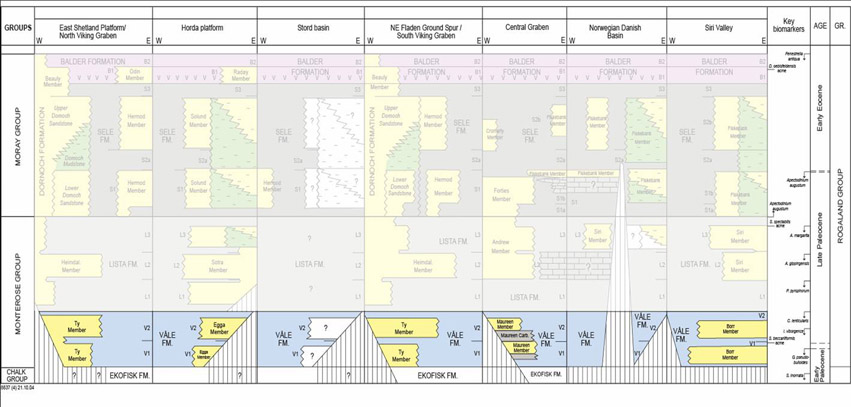
Fig.42. Lithostratigraphic summary chart of the Våle Formation (color) with members.
|
Unit definition
The Våle Formation is attributed to the lowermost, marly shales of the
Rogaland Group.
Name
The Våle Formation was named by Hardt et al. (1989; in Isaksen & Tonstad, 1989), and is equivalent to the
Maureen Formation in the UK.
Derivatio nominis
The Formation was named after the son of the Norse god Odin and his wife Rind.
Type well
Norwegian well 1/3-1 (Fig 43) from 3258 to 3209m
(defined by Hardt et al., 1989), coordinates N 56°51'21.00", E
02°51'05.00". No cores.
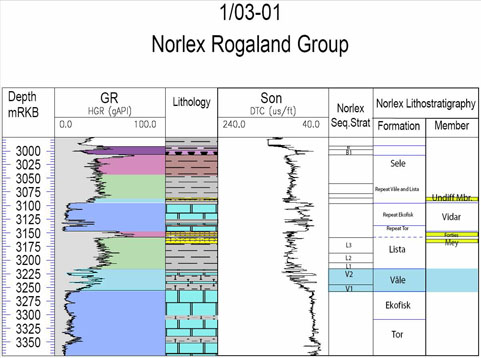
Fig. 43. Well 1/3-1 composite log Rogaland Group. Stratigraphic position of the Våle Formation is outlined in
the stratigraphic column to the right.
|
Reference wells
Norwegian well 15/9-5 (Fig.
44) from 2774 to 2736 m,
coordinates N 58°24'12.47", E 01°42'29.20". No cores.
Defined by Hardt et al., 1989.
Norwegian well 2/7-1 (Fig.
45) from 2934 to 2918 m,
coordinates N 56°25'44.68'', E 3°12'14.21''. No cores.
Defined by Hardt et al., 1989.
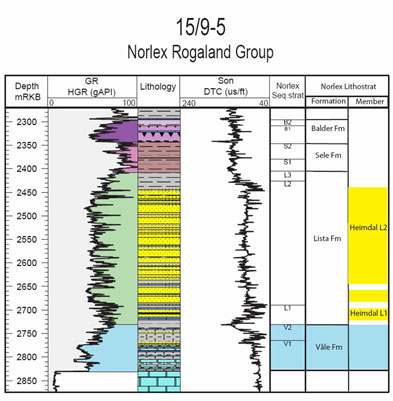
Fig. 44. Well 15/9-1 composite log Rogaland Group. Stratigraphic position of the Våle Formation is outlined in
stratigraphic column to the right.
|
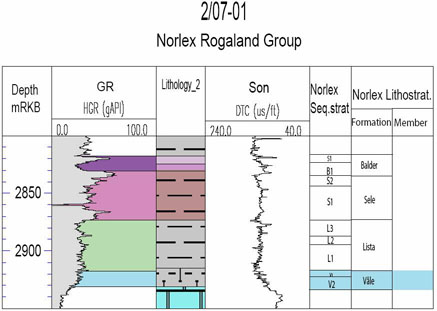
Fig. 45. Well 2/7-1 composite log Rogaland Group. Stratigraphic position of the Våle Formation is outlined in
stratigraphic column to the right.
|
Composition
The Våle Formation reflects a transition from pure chalks of the Shetland Group to
the low carbonate shales
and mudstones of the Lista Formation. The formation is dominated by marls and/or
mudstones with occurrences of
sandstones and carbonates layers. Layers of reworked and redeposited Danian and Cretaceous chalk are common in
some areas, especially in the Central Graben and the southern Viking Graben. In the Central Graben the
formation is developed as light grey marl, with chalk and limestone interbeds often eroded from actively
rising diapirs. In the southern Viking Graben area (Hardt et al., 1989), chalk and limestone interbeds are
sparser. From cores, bioturbation in the Våle Formation is seen to vary between major and minor occurrences of
variable sized trace fossils. Marly intervals are commonly intensively bioturbated, with rather large burrows.
A core photo example from the Våle Formation is shown in Fig. 46.
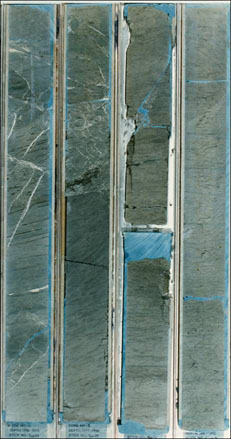
Fig. 46. Core example from the Våle Formation well 25/11-1 showing light to medium grey marly shales and
calcite cemented fractures. Well drilled by Norsk Hydro. Picture from NPD Fact Pages at
http://www.npd.no.
|
Wireline log characterization
Lower boundary
In the Central North Sea, the Norwegian-Danish Basin and the Southern Viking Graben the base of the Våle
Formation is picked at the usually abrupt change from marly mudstones with local
sandstones and thin interbeds
of limestone of the lower parts of the formation to pure chalks and marls in the Shetland Group beneath it.
Gamma-ray logs show an abrupt change from pure chalk with a constant baseline of low gamma ray response to the
overall but irregularly increasing gamma values through the overlying Våle Formation.
In the Northern North Sea the basal boundary is not as evident as further south since the Upper Cretaceous is
significantly less calcareous, and from lithology alone the Våle Formation is sometimes difficult to
distinguish from the underlying Shetland Group.
Upper boundary
The upper boundary of the Våle Formation is marked by a down hole change to dark grey, silty and variously
calcareous mudstones from the bioturbated, green and sometimes red-tinted, commonly waxy shales of the
Lista Formation.
From wireline logs, the top of the Våle Formation is picked where the overall
increase in gamma
ray and decrease in sonic velocity bends again to a base line of more constantly high gamma readings and
relatively low sonic velocity of the Lista Formation. The boundary is commonly associated with a high gamma
peak and may be established with support from the first down hole occurrence of Cenosphaera
lenticularis.
Thickness
The thickness of the Våle Formation varies much. The Våle Formation, including its sandstone members, reaches
a maximum thickness of 290 m in well 25/3-1, and in well 25/2-1 268 m is recorded.
In other places, like in 16/1-4
on the Utsira High, it is very thin (17 m) and in other places it is absent, like in
well 3/5-2 at the Sørvestlandet High.
Seismic characterization
The top of the Våle Formation can often be picked at a seismic reflector defining a downward shift from lower
velocity and density in the shales of the Lista Formation to higher velocity and
density in the Våle
Formation, giving positive acoustic impedance. This is sometimes disturbed by the presence of sandstone
members close to the boundary between the two formations.
Internal seismic character is highly variable, spanning from parallel to chaotic, with continuous to
discontinuous internal reflections of highly variable amplitude.
The most pronounced seismic reflector associated with the Våle Formation is the Top Shetland/Base Våle
interboundary. This boundary is usually seen as a marked high amplitude event highlighting the boundary
between the hard and high velocity chalk sediment and the lower velocity marly shales of the Våle Formation.
However, sometimes interfingering, reworked chalk beds in lower parts of the Våle Formation makes the boundary
difficult to pick.
Age
The Våle Formation is of Early to late Paleocene (Danian to earliest Thanetian) age, and spans about 2 my (cf.
Mudge & Bujak 1996).
Biostratigraphy
The top of the Våle Formation is picked below the top of I. ?viborgense (Iv)
and above the top of
T. cf. delicata (Td), and falls within the Cenodiscus zone.
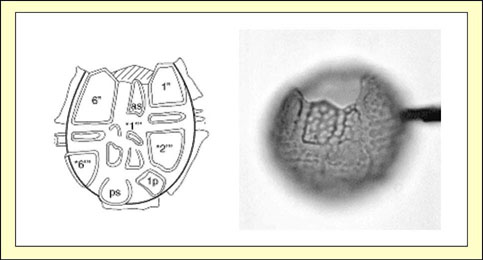
Fig. 47. Example of one of the diagnostic microfossils in the Våle Formation, Alisocysta reticulata.
Ventral view. Average range of type material: length = 55 µm, width = 51 µm. From the ODP Drilling Program at
http://www-odp.tamo.edu
|
Correlation and subdivision
Based on the sequence stratigraphic zonation established by Mudge & Bujak (1996) with maximum flooding
surfaces or condensation surfaces associated with specific chronostratigraphic bioevents, the Våle Formation
can be subdivided into a lower (V1) and an upper (V2) part.
Base of the V1 is picked at the intra Danian unconformity. This surface is associated with a major influx of
sand and reworked chalk in the North Sea Basin. The V1 subzone is assigned to the planktonic interval of the
Våle Formation (Mudge & Jones 2004), which contains an assemblage of planktonic foraminifers and the dinocyst
taxa Spiniferites "magnificus" and Alisicysta reticulata (Fig. 47). Because of the transition
from calcareous
to siliciclastic environment, there is no well developed high gamma shale associated with the flooding surface
at the top of the V1 zone. However, the "Near top Danian Unconformity", close to base of the V2 zone is often
well
expressed, and can be taken as an upper restrictive event. Biostratigraphically,
the top of the V1 zone can be
picked at the top of the Spiniferites magnificus dinocyst zone and slightly
below the top of the Globigerina
pseudobulloides microfaunal zone. The top of the V2 zone is picked at the high gamma shale that occurs
between
the I. ?viborgense and T. cf. delicata dinocyst zones and close
to the top of the
Cenosphaera lenticularis microfaunal zone.
The V2 is in general less marly and less carbonate rich than the V1. The Våle Formation corresponds to the
Maureen Formation of the UK sector, except for the sandstones.
Internally within the Våle Formation there are several sandstone members (Figs. 12, 13 and 42). The
Borr Member
and the Egga Member have an eastern provenance (Fennoscandia), whereas the
Ty Member and Maureen Member have
a western provenance (East Shetland Platform).
In some areas a dark colored, non calcareous zone is found in the upper part of the Våle Formation. In the
Danish sector of the Siri Canyon area this zone is named as a distinct member, the Vile Member. The same type
of development can locally be seen also further north, e.g. in well 25/11-17, but we prefer not to give this
part of the Våle Formation a separate member status in the Norwegian sector of the North Sea.
Links to member descriptions
Geographic distribution
The Våle Formation (and intra Maureen mudstones) is present along the topographic basin lows inherited from
major Jurassic graben axes of the Central Graben, Viking Graben, Stord Basin and Måløy Terrace and in the
Norwegian Danish Basin. The formation is locally absent due to non deposition or erosion at the Shetland
Platform and along the eastern margins of the Måløy Terrace, Horda Platform, the Stord Basin and the
Norwegian
Danish Basin. On several basinal highs, like the Utsira and the Jæren highs, the whole formation or parts of
it is found to be absent due to local erosion or non deposition. Fig. 48 shows the distribution of the Våle
Formation with sandstone members.
Depositional environment
The combined effect of a sea level drop in the Late Danian with increased siliciclastic input from larger
exposed terrestrial and the climatic cooling gradually switched off the coccolithic carbonate systems of the
Chalk Group.
The marly clay and siltstones that were deposited early in this period were succeeded by less calcareous fines
by the end of the period. The sea level drop in the beginning of this period led to
reworking and redeposition
of chalky material. Subsequently, erosion decreased and the North Sea basin with flanks was transgressed. In
general, the basin was well circulated, especially in the beginning of this period, reflected by the
occurrence of large trace fossils. Transition to somewhat less oxygenated conditions towards the end of the
period is inferred from the presence of generally smaller trace fossils upwards in the Våle Formation.
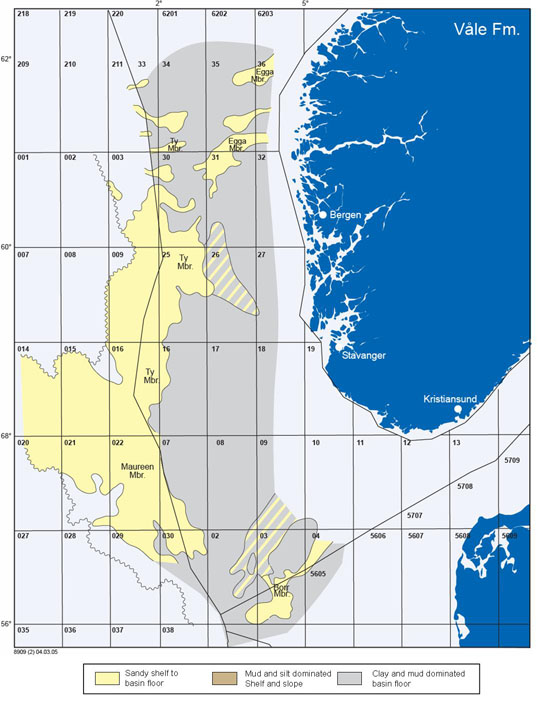
Fig. 48. Distribution of the Våle Formation and its sandstone Members.
|








